INTRODUCTION

Whenever someone asks of me what i first look for in an AIO liquid CPU cooler my answer is cooling efficiency and well that's always been the case for me. Yes, looks do matter as well but although you can accept high cooling efficiency without looks you can't possibly accept looks without high cooling efficiency. What happens however when you come across an AIO liquid CPU cooler that looks like no other (almost) in the market? Would you be willing to forsake cooling efficiency if it came down to that? Well, that was my very first thought when almost two months ago I landed on the web page of the ML-ULTRA360 AIO ARGB Liquid Cooler by Mars Gaming.
Mars Gaming is the leading international brand of advanced technology products. Manufactured to the highest quality and performance, yet at the most competitive prices, through the use of sustainable materials and manufacturing technologies and the maximum optimization of all manufacturing and distribution processes.
The ML line of AIO Liquid Coolers by Mars Gaming includes the PRO and ULTRA versions both of which are available in 240/360mm sizes (the ULTRA is also available in both white and black colors). The ML-ULTRA360 (tri-fan) variant which i have here with me today delivers a TDP (thermal design power) of up to 650W (not a very realistic number of course) thanks to their 3rd generation Opti-Chamber, high-performance ceramic pump (3200RPM), 397mm long and 27mm thick aluminum radiator and the three fluid-dynamic bearing 120mm fans (1800RPM/69.2CFM/26dBA). What steals the show however is the infinity mirror ARGB pump top and the two 370mm long Teflon tubes which are wrapped inside removable ARGB sleeves/covers. Needless to say, both the top of the pump, the ARGB tube covers and the three 120mm FDB fans are all compatible with 3-pin ARGB technologies such as ASUS Aura Sync, ASRock Polychrome Sync, Razer Chroma ARGB, Gigabyte RGB Fusion and MSI Mystic Light. As for warranty Mars Gaming backs all their product lines with a somewhat standard 3-year limited one.
SPECIFICATIONS AND FEATURES

PACKAGING AND CONTENTS
Mars Gaming uses a black box the front of which is taken by two product pictures (the ML-ULTRA360 in black and white), the main product features and their logo.
Motherboard compatibility and some of the product specifications are printed on the left side.
3 product pictures are located at the rear of the box and next to the product features and specifications and the motherboard compatibility list.
Typically, the AIO and its bundle are both placed inside a formed piece of cardboard.
Along with the main body of the ML-ULTRA360 and its three 120mm fluid dynamic bearing fans inside the box you'll also find a Y-fan splitter, 3-pin cable extension, SATA power cable, small thermal paste tube, backplate and all the bits and pieces required to install the ML-ULTRA360 onto Intel LGA 1150/1151/1155/1156/1200/1700/2011/2011-3/2066 and AMD AM2/AM2+/AM3/AM3+/AM4/AM5/FM1/FM2/SP3/sTR4/sTRX4 motherboards.
THE ML-ULTRA360
AIO liquid coolers all look the same lately and yes, that's also the case with the ML-ULTRA360, at least at first glance.
The 397mm long and 120mm wide aluminum radiator is 27mm thick just like most used with AIO liquid coolers today.
A fill/empty port is located on the far top corner of the radiator (not to be used).
With an FPI (fins per inch) count of 22 this radiator should perform well with high pressure fans.
The removable ARGB sleeves/covers placed over the 370mm long Teflon tubes don't cover their entire surface.
As with many other AIO models in the market today the top of the pump/waterblock combo features the infinity ARGB mirror effect.
Typically, the tubes can rotate up to roughly 90% from the pump/waterblock combo to simplify installation.
The copper coldplate is medium sized and has no machine marks on it.
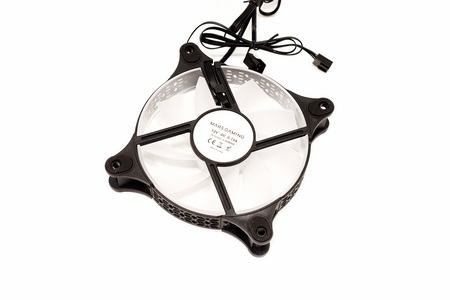
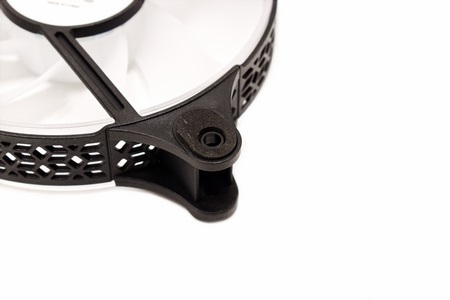 All three fluid dynamic bearing fans have rubber pads on all 4 corners and the company name at the front and rear (this is not something I liked, looks way too simple).
All three fluid dynamic bearing fans have rubber pads on all 4 corners and the company name at the front and rear (this is not something I liked, looks way too simple).
With the fans installed the aluminum radiator now measures roughly 52.2mm in thickness (videos should be available on both TikTok and YouTube).
TEST BED
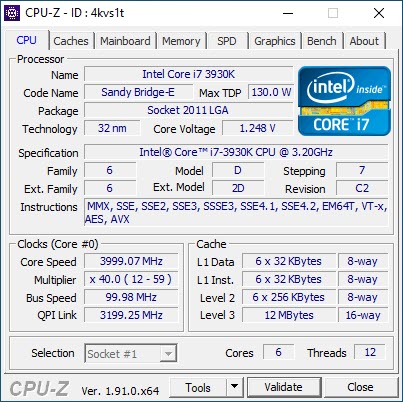

TESTING METHODOLOGY
Testing complete water cooling kits or individual radiators is no different than testing CPU Coolers and since we want all of you to be able to compare similar products, we created new and separate charts (you can still cross-compare results however since we are using the same test rig). So once again single (120/140mm) watercooling solutions are tested with the radiator mounted at the rear of our test rig while dual/triple/quad (240/260/280/360/420/480/560mm) solutions with the radiator mounted at the top. For the dBA tests complete water cooling kits or radiators with bundled fans are measured both while on idle mode or with the fan controller in the minimum setting and while on extreme load or with the fan controller all the way to the highest possible setting (PWM fans do that on their own without our intervention). Every single test takes place in a temperature controlled room of 23 degrees Celsius Ambient Temp with the help of two AC units placed diagonally inside the room. Finally, much like when testing CPU Coolers, it's very important to point out that just because a water cooling kit outperforms another when tested with our test rig (when we test complete water cooling kits) that does not necessarily mean that the same performance differences will apply 100% for other CPU models and in other situations (such as different ambient temps and system configurations).
To successfully record the load temperatures, we use the latest OCCT application for around 6-10 minutes to push the processor to its limits and after that is done and the temperatures are recorded, we wait for about 10-20 minutes for the CPU to cool down and record the idle temperatures. This is done to allow time for the thermal conductive material to achieve the optimal performance level. Same procedure is then repeated with the Passmark BurnIn Test as a failsafe just in case the OCCT results are wrong. This procedure takes a lot more time than the usual peltier/thermometer tests but this way not only can we deliver real world results to our readers based on real CPUs but we can also triple check the results using a variety of programs. Last but not least the temperatures were recorded using both the latest versions of AIDA64 and RealTemp while the noise level tests (when fans exist in the bundle) are performed using a high precision ExTech HD600 Decibel Meter placed about 10-15cm above the radiator. Still although the same testing procedure applies to all units do take into consideration that unlike the official numbers which are measured in special noise isolated labs with just the fans here, we also have both the rest of the cooler and the rest of the system (although all system fans are turned off when recording noise levels).
TEST RESULTS


CONCLUSION
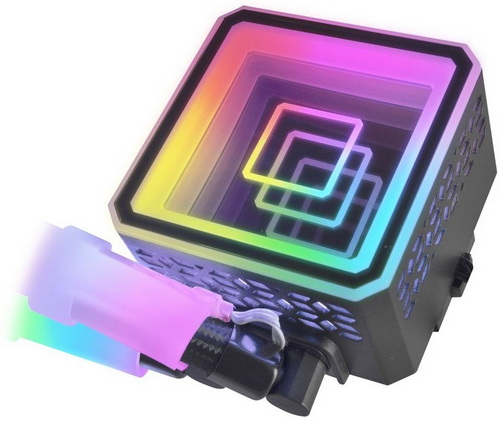
Mars Gaming is not a name most people would have heard prior to this review and well, the same applies for me too, more or less. So, when I first laid eyes on the ML-ULTRA360 I thought it looked very nice, but I didn’t expect much in terms of performance. In the end the ML-ULTRA360 may not be among the highest cooling efficiency models but it does very well and looks a lot better than most if not all AIO models to date (sole exceptions are LCD models). Unfortunately, the ARGB sleeves don’t cover the entire length of the Teflon tubes (that would be nice) but I guess we can’t have it all.
Currently the ML-ULTRA360 AIO by Mars Gaming retails for just 111.22Euros inside the EU (Amazon.de) a price tag which is honestly very tempting for such a product. Unfortunately, availability outside the EU is not great and this is almost always an issue with local manufacturers. All said and done the ML-ULTRA360 may not be the highest performance AIO liquid cooler out there, but it looks great and does perform well so the Golden Award is in order.

PROS
- Good Cooling Efficiency
- Infinity Mirror Pump
- Unique Looking ARGB Sleeves
- Up to Six 120mm Fans in Push & Pull
- Motherboard Compatibility
- Price (For Some)
CONS
- Global Availability

 O-Sense
O-Sense





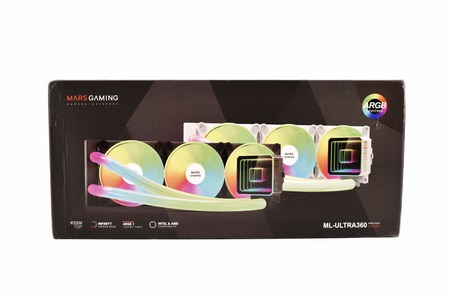
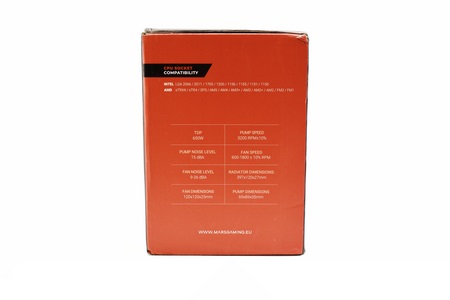
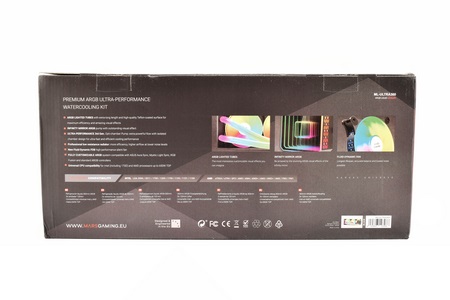

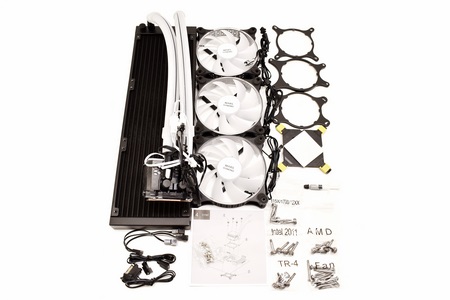
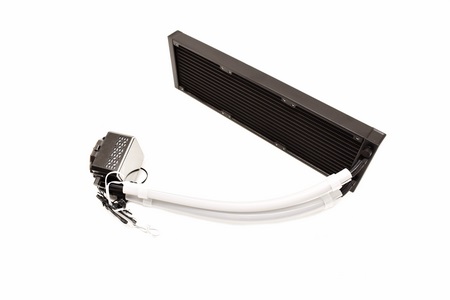


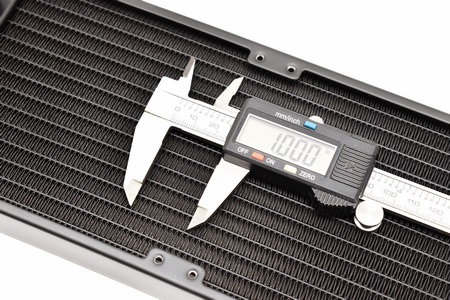
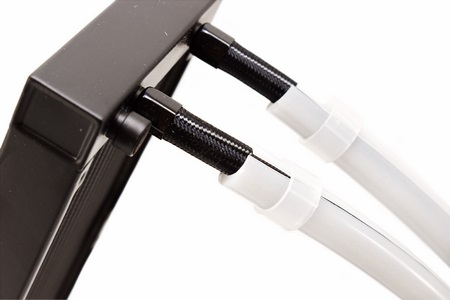
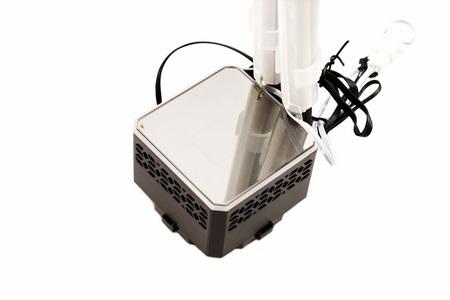
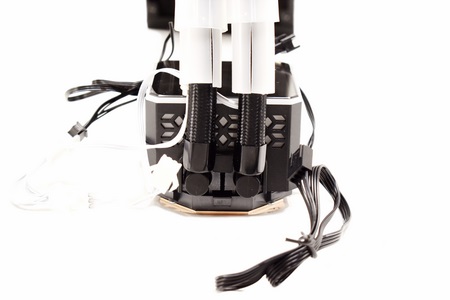
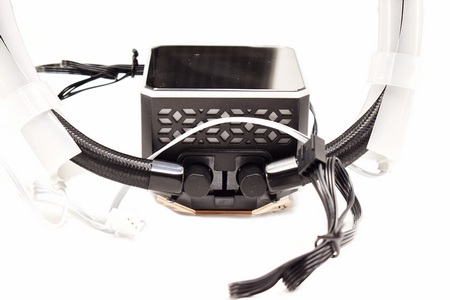
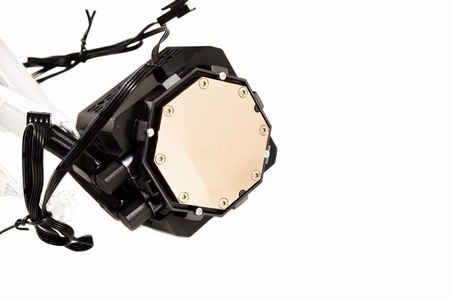
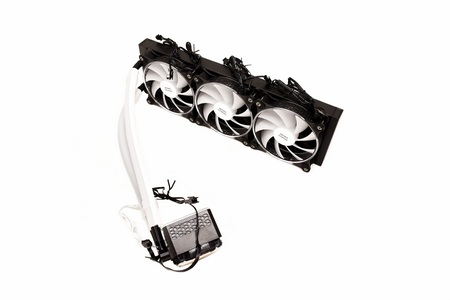


.png)

